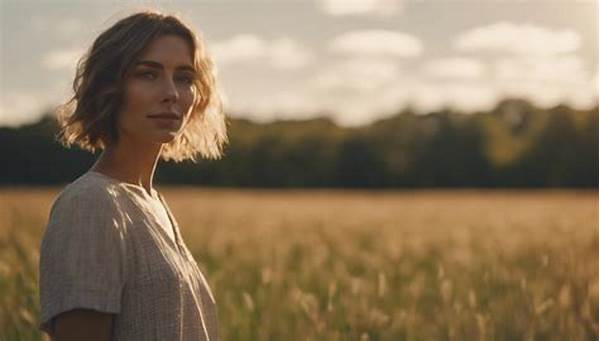Hey there, photography enthusiasts! So, I’ve recently been messing around with photography compositions, and let me tell you, the world of leading lines is absolutely fascinating. If you’ve ever wondered how some photographers effortlessly guide your eyes through a picture, all the magic is in mastering leading lines! Let’s break it all down, shall we? Get comfy, grab a cup of coffee, and dive into these leading lines composition tips with me.
Read Now : Tips For Relaxed Portrait Photography
Understanding the Basics of Leading Lines
Okay, buckle up! Leading lines are essentially lines within a photograph that guide the viewer’s eye through the image, often directing attention to the main subject. These lines can be anything from roads, fences, or rivers to shadows, patterns, or even clouds. The beauty of leading lines is that they not only add depth but also dimension to your shots, making them incredibly captivating.
Now, onto the nitty-gritty! The first tip is to look around you – roads, pathways, or railways make fantastic leading lines. They naturally pull the viewer’s focus straight through the frame. Second, don’t ignore the vertical and diagonal lines; they add drama and dynamics. Third, experiment with your camera angles. Sometimes, shooting from a lower or higher perspective can completely change how the lines interact with your subject.
Lastly, practice makes perfect, right? Test out different types of leading lines in various settings. There’s no one-size-fits-all, but the more you experiment, the more you’ll discover what works best for you. So, get out there and start shooting to master these leading lines composition tips!
Quick Tips for Enhancing Leading Lines
1. Use Natural Elements: Nature provides endless options for leading lines, like rivers or tree lines, to create a path for the viewer’s eye.
2. Play Around with Architecture: Buildings and bridges offer strong, defined lines that can lead to stunning compositions.
3. Incorporate Shadows: Shadows cast on the ground can serve as creative leading lines, adding an extra layer of interest.
4. Leading Lines in Everyday Objects: Don’t overlook mundane objects like benches or railings; they can work wonders in guiding viewers.
5. Focus on Foregrounds: Using lines that lead from the foreground can add depth and intrigue, making your main subject pop.
Mastering the Art of Leading Lines
Let’s talk about how you can really nail those leading lines composition tips like a pro. First, start by thinking about the story you want to tell with your photograph. What emotion or focus are you trying to convey? Once you have this in mind, scan your environment for lines that complement your narrative. Leading lines should enhance your story, guiding the viewer naturally without overwhelming them.
Another important aspect is practicing patience. Sometimes, the perfect shot takes time to find. Don’t settle for the first set of lines you see. Walk around, crouch down, or climb up for a different perspective. You’ll be amazed at how the smallest shift in angle can transform a composition. And remember, post-processing is a powerful tool. A little editing can enhance your lines, bringing them forward and emphasizing their guiding nature. So, combine technique with a bit of creativity, and watch your photography game elevate!
Comprehensive Breakdown of Leading Lines Techniques
1. Converging Lines: Use two or more lines that converge towards the main subject, drawing all attention to it.
2. Diagonal Lines: Create movement and energy by incorporating diagonal lines leading to your focus area.
3. Curved Lines: Gently guiding the eye, curved lines add grace and fluidity to your composition.
4. Horizontal Lines: These lines bring a sense of stability and can ground your subject within the frame.
5. Vertical Lines: Use these for emphasizing height or grandeur in your shots.
Read Now : Impact Of Framing On Aesthetics
6. Assess the Environment: Always be on the lookout for natural or man-made lines that fit into your frame.
7. Subject Placement: Consider where to position your main subject in relation to the leading lines for maximum impact.
8. Symmetry and Balance: Lines can be used to create symmetry or balance within the composition, drawing equal attention to all areas.
9. Lighting Considerations: Pay attention to the light source and how it interacts with the lines, creating shadows or highlights.
10. Continuous Learning: Always keep practicing and exploring new environments to refine your skills with leading lines composition tips.
Exploring Creative Angles with Leading Lines
Oh man, nothing spices up your photos quite like experimenting with perspective, especially when it comes to leading lines composition tips. It’s all about seeing the mundane differently, like transforming a simple sidewalk or staircase into an epic visual journey. What’s awesome about playing with angles is that it gives your shots that unique twist, making them one-of-a-kind.
For starters, ever tried getting real low to the ground? This makes those lines loom large and lead boldly into your shot, kind of like giving them a voice of their own. Alternatively, if you snag a shot from a high vantage point, it can totally change how those lines flow. It’s fascinating how a small change in perspective can redefine the entire composition. Try shooting through or around objects too. This adds depth and layers to your composition that are just oh-so satisfying to the eye.
And listen, don’t fear the odd or unconventional angles. Sometimes it’s those wildcard shot attempts that yield the coolest outcomes. Mixing up your angles and points of view not only keep things fresh for you but add that extra layer of intrigue for anyone checking out your work. Keep these leading lines composition tips close while you’re out snapping away. You might just surprise yourself with what you create—all with a bit of curiosity and courage to see things a little differently.
Let’s Get Real with Leading Lines
Yo, here’s the lowdown on leading lines composition tips—they’re like the cheat code for stepping up your photography game. Seriously, whether you’re snapping pics for the ‘Gram or just trying to impress your buddies, knowing how to use these like a boss is key. It’s about creating that path in your pic that pulls people right in, sort of like bread crumbs leading to the good stuff.
Think of leading lines as your photo’s secret weapon. They guide peepers right where you want ’em, all smooth-like. Mastering this makes everything pop, turning iPhone snaps into what looks like professional shots from a fancy camera. Who knew a simple sidewalk shot or those random train tracks could turn out so dope, right? Just remember, practice makes perfect. Keep those leading lines composition tips buzzing in your noggin as you shoot, and soon you’ll be the go-to person for photo advice among your friends. Keep it chill, keep it snapping!
Summarizing the Magic of Leading Lines
Alright, so let’s wrap up our journey into the world of leading lines composition tips. Here’s the deal: by mastering these techniques, you’re not just taking photos; you’re creating stories and experiences. Leading lines are all about direction and emphasis. They’re that storyteller’s voice gently pulling the viewers’ focus exactly where it needs to be, all while adding depth and allure to your compositions.
What’s beautiful about leading lines is their versatility. From architecture to nature, any environment can present opportunities to apply these tips. And while practice is key, keep experimenting with all the options: natural, man-made, vertical, diagonal—you name it! The more you play around, the more you’ll understand how to deftly weave them into your creative process, allowing each of your images to tell its own vivid tale.
In the end, you’ll find that leading lines aren’t just a photographic technique; they’re an art form. They add a layer of intention to your work, creating a seamless flow that captures and holds the viewer’s attention. So, go out there equipped with these leading lines composition tips, and start creating compelling compositions that delight and inspire both you and those who admire your work. Happy snapping!



